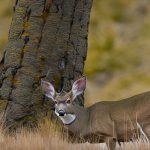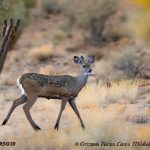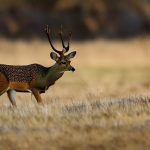Your cart is currently empty!

hunt saskatchewan mule deer

Saskatchewan is known for its vast and diverse hunting opportunities, and mule deer hunting is no exception. With its wide open spaces, abundant wildlife, and stunning landscapes, it’s no wonder that Saskatchewan is a popular destination for mule deer hunters from around the world.
Mule deer hunting in Saskatchewan offers a unique and thrilling experience. The province is home to a healthy population of mule deer, with some of the largest bucks in North America being harvested here. The combination of the challenging terrain, unpredictable weather conditions, and the elusive nature of mule deer make hunting in Saskatchewan an exciting adventure.
Key Takeaways
- Saskatchewan offers great opportunities for mule deer hunting.
- Understanding the habitat and behavior of mule deer is crucial for a successful hunt.
- The best time for mule deer hunting in Saskatchewan is during the rut in November.
- Hunters must comply with hunting regulations and licensing requirements in Saskatchewan.
- Choosing the right hunting gear is important for a comfortable and successful hunt.
Understanding the Habitat and Behavior of Mule Deer in Saskatchewan
To increase your chances of a successful hunt, it’s important to have a good understanding of the habitat and behavior of mule deer in Saskatchewan. Mule deer are typically found in open grasslands, as well as mixed forests and agricultural areas. They are adaptable animals that can thrive in a variety of habitats, but they prefer areas with a mix of cover and open spaces.
Mule deer are primarily crepuscular, meaning they are most active during dawn and dusk. They tend to bed down during the day in areas with good cover, such as thickets or tall grasses. Understanding their behavior patterns can help you determine where to focus your hunting efforts.
Best Time of Year for Mule Deer Hunting in Saskatchewan
Saskatchewan offers different hunting seasons for mule deer, including archery, rifle, and muzzleloader seasons. The best time of year to hunt mule deer in Saskatchewan depends on your preferred hunting method and personal preferences.
Archery season typically starts in early September and offers hunters the opportunity to hunt during the pre-rut and rut periods when bucks are more active and visible. Rifle season usually begins in late October or early November when the rut is winding down, and the deer are focused on replenishing their energy reserves. Muzzleloader season typically falls between the archery and rifle seasons, offering a unique hunting experience.
When planning your hunting trip, it’s important to consider factors such as weather conditions, hunting pressure, and your own availability. The rut period can be an exciting time to hunt mule deer, but it can also be crowded with other hunters. If you prefer a quieter hunting experience, you may want to consider hunting during the early or late season when there is less hunting pressure.
Hunting Regulations and Licensing Requirements in Saskatchewan
Before embarking on your mule deer hunting adventure in Saskatchewan, it’s crucial to familiarize yourself with the hunting regulations and licensing requirements. The Saskatchewan Ministry of Environment sets these regulations to ensure the sustainability of wildlife populations and maintain a fair and ethical hunting environment.
In Saskatchewan, hunters are required to have a valid hunting license, which can be obtained through an online application process or at designated license issuers. It’s important to note that non-resident hunters may have different licensing requirements than residents.
The hunting regulations in Saskatchewan specify bag limits, hunting seasons, weapon restrictions, and other important guidelines. It’s essential to review these regulations thoroughly and stay compliant to avoid any legal issues or penalties.
Choosing the Right Hunting Gear for Mule Deer Hunting in Saskatchewan
Having the right gear is crucial for a successful mule deer hunt in Saskatchewan. Some essential gear includes a high-quality rifle or bow, appropriate ammunition or arrows, binoculars or spotting scopes, camouflage clothing, a backpack, a knife for field dressing, and game bags for meat storage.
When choosing your gear, it’s important to consider factors such as durability, comfort, and functionality. Investing in high-quality gear can make a significant difference in your overall hunting experience and increase your chances of success.
Tips for Scouting and Spotting Mule Deer in Saskatchewan
Scouting is a crucial part of mule deer hunting in Saskatchewan. Before your hunt, spend time familiarizing yourself with the hunting area and look for signs of mule deer activity, such as tracks, droppings, and bedding areas. Pay attention to food sources, water sources, and travel corridors to determine where the deer are likely to be.
When spotting mule deer in their natural habitat, it’s important to use binoculars or spotting scopes to scan the area thoroughly. Look for movement, flickering ears, or antler tips sticking out from behind cover. Mule deer have excellent camouflage and can blend in seamlessly with their surroundings, so a keen eye and patience are essential.
Tracking and Stalking Techniques for Mule Deer Hunting in Saskatchewan
Tracking and stalking are essential skills for mule deer hunting in Saskatchewan. When tracking mule deer, look for fresh tracks, droppings, or broken branches along their travel routes. Follow the trail quietly and slowly, paying attention to any signs of recent activity.
Stalking mule deer requires patience and persistence. Move slowly and quietly, using available cover to conceal your movements. Pay attention to wind direction to avoid alerting the deer with your scent. It’s important to be prepared for long periods of waiting and to take advantage of any opportunities that present themselves.
Field Dressing and Processing Mule Deer in Saskatchewan
Once you’ve successfully harvested a mule deer in Saskatchewan, it’s important to properly field dress and process the animal to ensure the quality of the meat. Field dressing involves removing the internal organs and cooling the carcass as quickly as possible to prevent spoilage.
To field dress a mule deer, start by making an incision from the sternum down to the pelvis. Carefully remove the internal organs, being cautious not to puncture them. Once the carcass is cleaned out, prop open the chest cavity to allow air to circulate and cool the meat.
After field dressing, it’s important to process the meat promptly. This involves removing the quarters, backstraps, and other cuts of meat from the carcass. Proper meat handling and storage are crucial to maintain the quality and safety of the meat.
Hunting with a Guide vs. DIY Hunting in Saskatchewan
When planning your mule deer hunting trip in Saskatchewan, you have the option to hunt with a guide or go the DIY route. Both options have their pros and cons, and the choice ultimately depends on your preferences, experience level, and budget.
Hunting with a guide can offer several benefits, especially for those who are new to mule deer hunting or unfamiliar with the area. Guides have extensive knowledge of the local terrain, deer behavior, and hunting techniques. They can provide valuable guidance and increase your chances of a successful hunt. However, guided hunts can be more expensive and may limit your flexibility in terms of hunting locations and methods.
On the other hand, DIY hunting allows for more freedom and flexibility. It can be a rewarding experience for experienced hunters who enjoy the challenge of planning and executing their own hunts. DIY hunting also tends to be more cost-effective, as you won’t have to pay for guide fees. However, it requires more research, scouting, and preparation on your part.
Conservation Efforts for Mule Deer in Saskatchewan and Their Impact on Hunting Opportunities
Conservation efforts play a crucial role in maintaining healthy mule deer populations in Saskatchewan and ensuring sustainable hunting opportunities for future generations. The Saskatchewan Ministry of Environment works closely with various organizations and stakeholders to implement conservation measures that protect mule deer habitats and manage populations effectively.
These conservation efforts include habitat restoration projects, predator management programs, research initiatives, and public education campaigns. By contributing to these efforts through hunting license fees, habitat improvement projects, or volunteer work, hunters can actively participate in the conservation of mule deer and their habitats.
In conclusion, mule deer hunting in Saskatchewan offers a thrilling and rewarding experience for hunters of all levels. By understanding the habitat and behavior of mule deer, choosing the right gear, and honing your tracking and stalking skills, you can increase your chances of a successful hunt. It’s important to familiarize yourself with the hunting regulations and licensing requirements, as well as practice ethical hunting practices to ensure the sustainability of mule deer populations in Saskatchewan.
If you’re an avid hunter looking to expand your horizons, you might be interested in hunting Saskatchewan mule deer. These majestic creatures offer a thrilling challenge for any seasoned hunter. To enhance your hunting experience, it’s crucial to have the right gear and knowledge. In a recent article by Old Oak Syndicate, they provide valuable insights on the essential equipment needed for a successful mule deer hunt in Saskatchewan. From choosing the right rifle to understanding their behavior patterns, this article covers it all. Check out the article here to ensure you’re fully prepared for your next mule deer hunting adventure.
FAQs
What is Saskatchewan?
Saskatchewan is a province located in western Canada.
What is a mule deer?
Mule deer are a species of deer found in western North America. They are named for their large ears that resemble those of a mule.
When is the hunting season for mule deer in Saskatchewan?
The hunting season for mule deer in Saskatchewan typically runs from early September to mid-December.
Do I need a license to hunt mule deer in Saskatchewan?
Yes, a valid hunting license and a mule deer tag are required to hunt mule deer in Saskatchewan.
How many mule deer can I hunt in Saskatchewan?
The number of mule deer that can be hunted in Saskatchewan varies depending on the specific hunting zone and the type of license held. It is important to check the regulations for the specific area being hunted.
What is the bag limit for mule deer in Saskatchewan?
The bag limit for mule deer in Saskatchewan varies depending on the specific hunting zone and the type of license held. It is important to check the regulations for the specific area being hunted.
What is the best time of day to hunt mule deer in Saskatchewan?
Mule deer are most active during the early morning and late afternoon, so these are typically the best times to hunt them.
What is the terrain like in Saskatchewan for hunting mule deer?
The terrain in Saskatchewan varies depending on the specific hunting zone, but it generally consists of prairies, forests, and hills. It is important to be prepared for a variety of terrain when hunting mule deer in Saskatchewan.
What is the average size of a mule deer in Saskatchewan?
The average size of a mule deer in Saskatchewan varies depending on the specific area, but they typically weigh between 100 and 300 pounds and stand between 3 and 4 feet tall at the shoulder.

Herb has been a longtime lover of the outdoors. Whether it be hunting, camping, fishing or just getting outside to reset. Proud father and animal lover. Bourbon anyone?

by
Tags:
Comments

Categories
- Big Game Hunting (301)
- Deer (202)
- Reviews (3)
- Shooting (16)
- Slingshot (1)
- Small Game Hunting (42)
- Upland Hunting (126)
- Waterfowl Hunting (3)





Leave a Reply